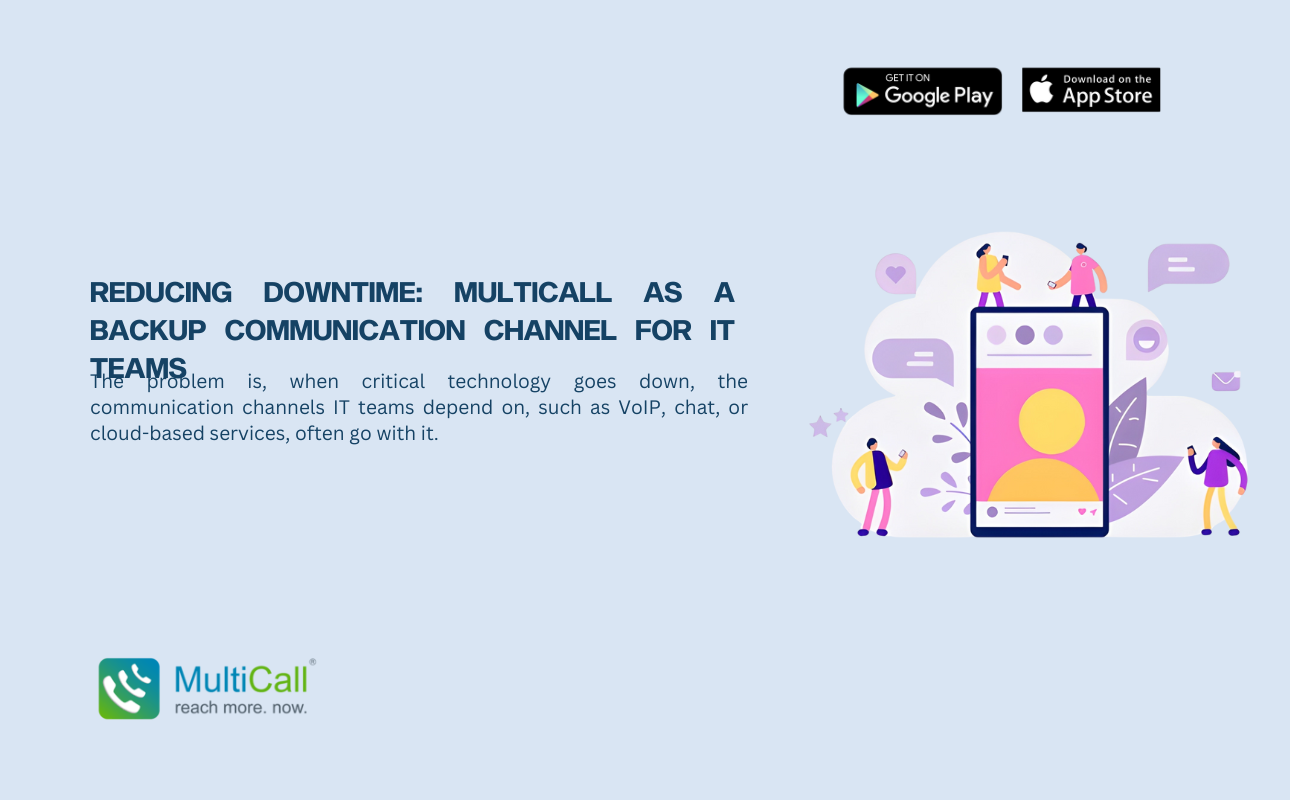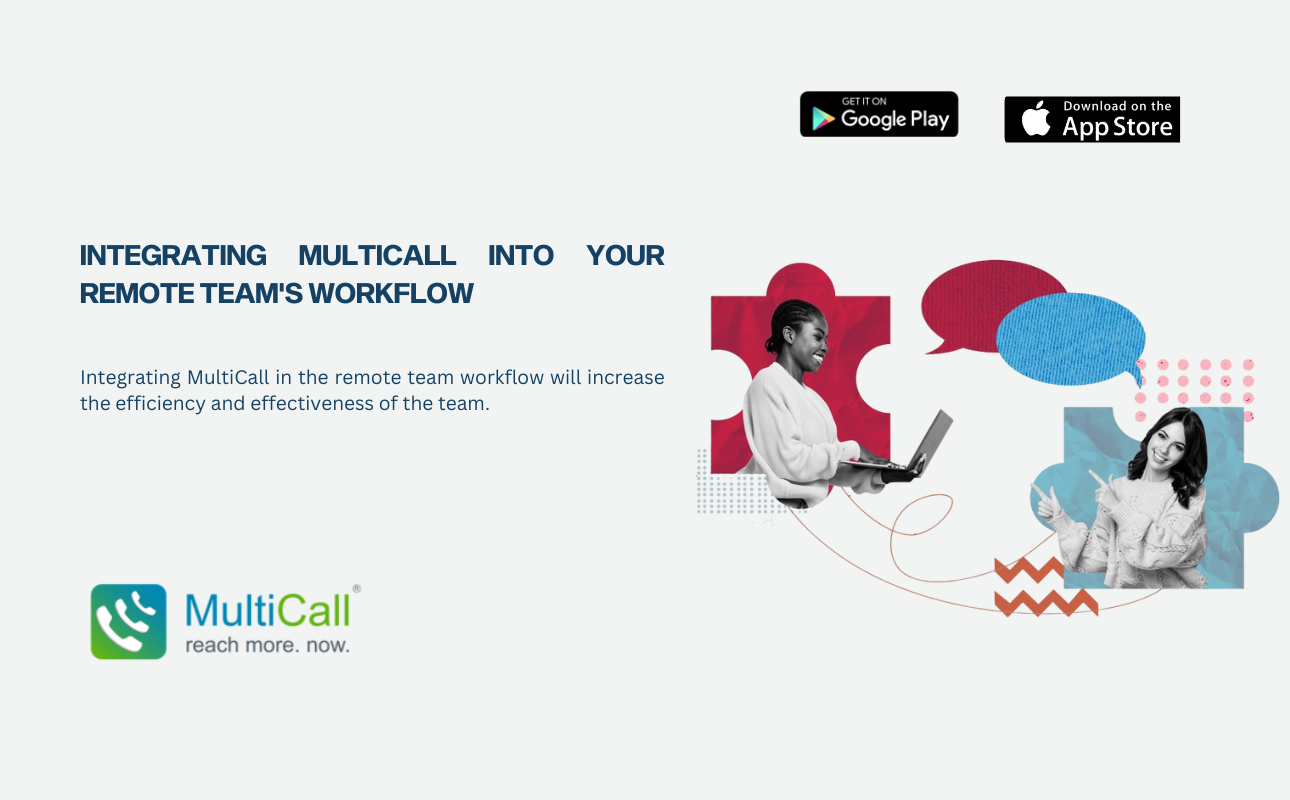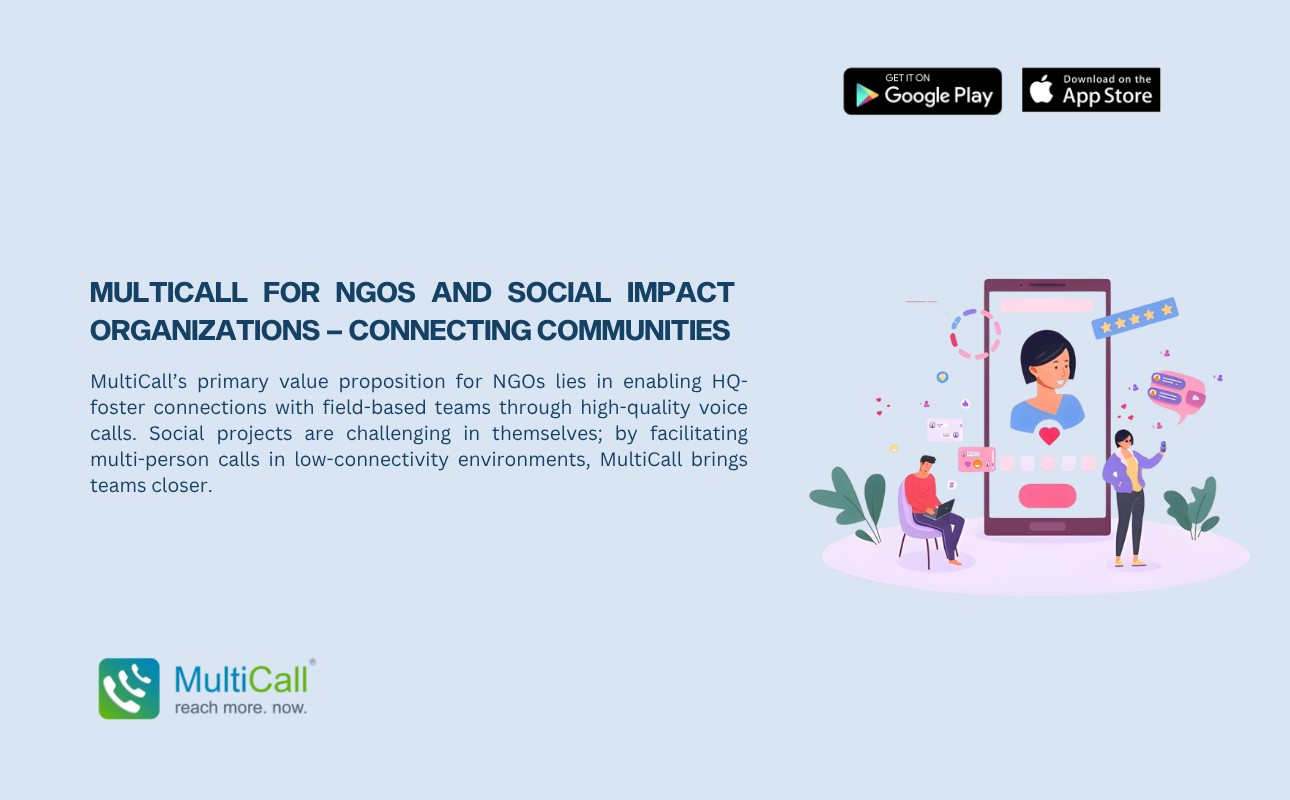
REDUCING DOWNTIME: MULTICALL AS A BACKUP COMMUNICATION CHANNEL FOR IT TEAMS
The problem is, when critical technology goes down, the communication channels IT teams depend on, such as VoIP, chat, or cloud-based services, often go with it.

MultiCall is an option as it works differently from any other phone app in the market. Most communication platforms use VoIP technology to transfer audio and video data via the internet. With MultiCall, your calls are placed over regular telephone lines for higher quality without apps, links, or internet data.
In this post, you’ll discover different use cases of MultiCall and practical tips on how to use it in your remote team workflow.
In most team workflows, a call requires:
Setting this up every time is time-consuming. More so for remote team members who are not tech-savvy or working in low-bandwidth regions.
The MultiCall advantage:
Add your remote team’s contact numbers and save groups in MultiCall’s dashboard or mobile app. Your team lead or project manager can then schedule a daily standup or weekly planning session. Calls will be made to the entire team within seconds, without any extra steps required.
In low-network locations, audio and video call quality with other phone apps is poor. Bandwidth limitations are common problems that hamper VoIP calls. It can lead to the following:
Calls become impossible to manage, especially for group communication. MultiCall calls work over the phone network and not the internet.
The call quality is not affected by slow Wi-Fi or spotty mobile data. HD audio clarity can be maintained on all devices.
Team members working in remote locations, such as field staff, interns, or regional team leads, can use MultiCall for important updates and group brainstorming. They no longer need to worry about network issues.
Remote onboarding often involves a series of calls for introductions, taking a new hire through company tools and policies, as well as training on role responsibilities. This often gets dispersed across multiple platforms.
With MultiCall, you can conduct group calls for multiple new hires. Assign a group to each batch of new hires and use MultiCall to give each a call slot. All new members can get onboarded in a single session without the confusion of links and login delays.
Remote teams often face critical updates that need immediate collaboration. In such cases, setting up a video call is a hassle and often takes a lot of time.
MultiCall makes it easy connect a pre-defined group of team members with a single tap. It can ring all participants instantly, without any pre-join prep work. Isolate voice conversations for emergencies, ad-hoc task forces, or urgent decisions.
Conclusion
MultiCall addresses these challenges by consolidating team communication and restoring reliable audio quality. From growing startups to distributed teams in large enterprises, MultiCall is ready to be integrated into your workflows to help your teams collaborate better. Get in touch with us today to access the best remote team call service.



The problem is, when critical technology goes down, the communication channels IT teams depend on, such as VoIP, chat, or cloud-based services, often go with it.

MultiCall’s primary value proposition for NGOs lies in enabling HQ-foster connections with field-based teams through high-quality voice calls. Social projects are challenging in themselves; by facilitating multi-person calls in low-connectivity environments, MultiCall brings teams closer.

Large enterprises are all about collaboration. Enter MultiCall’s voice communication system that effortlessly connects multiple departments via unlimited group calling and smart scheduling.
Video conferencing often makes interdepartmental meetings inaccessible for many teams. When departments can’t meet without lags or face login issues and other video call mishaps, communication bottlenecks happen.

The MultiCall solution is centered around team calling. Group calls over voice make it possible for teams to coordinate schedules, share information, and discuss important topics. MultiCall enables users to connect in the fastest, most reliable, and most secure way possible.

It could be a village doctor trying to connect with a specialist in the city or a mobile medical team updating the hospital about their work. With MultiCall’s PSTN backbone, such calls go through with reliability, without needing high-speed data or Wi-Fi.

Efficiency equals profitability in business; central to that is communication. Countless organizations have miscalculated the cost of an unreliable phone or messaging application. Hours of delays, dropped calls, miscommunication, lost meetings, and disjointed coordination can translate into serious financial loss for an enterprise.
Communication has become less of an amenity and more of an investment. Enterprise voice communication software like MultiCall, with a complete solution for large teams, comes with a very clear and direct return on investment (ROI) through increased productivity, decreased downtimes, and operationally safeguarded communication.